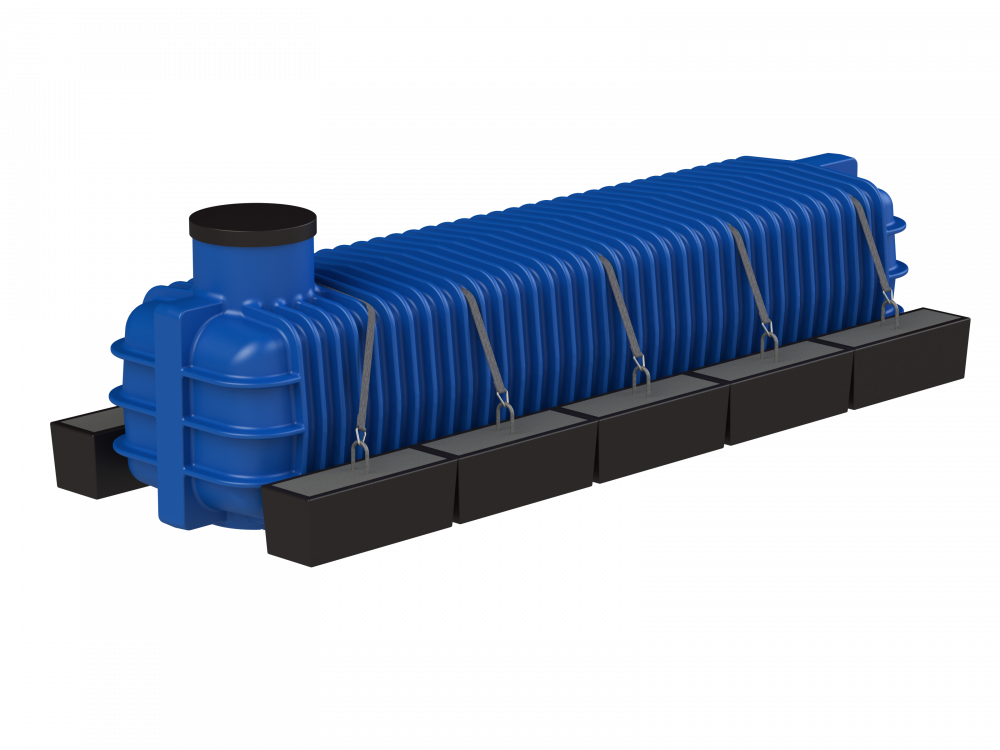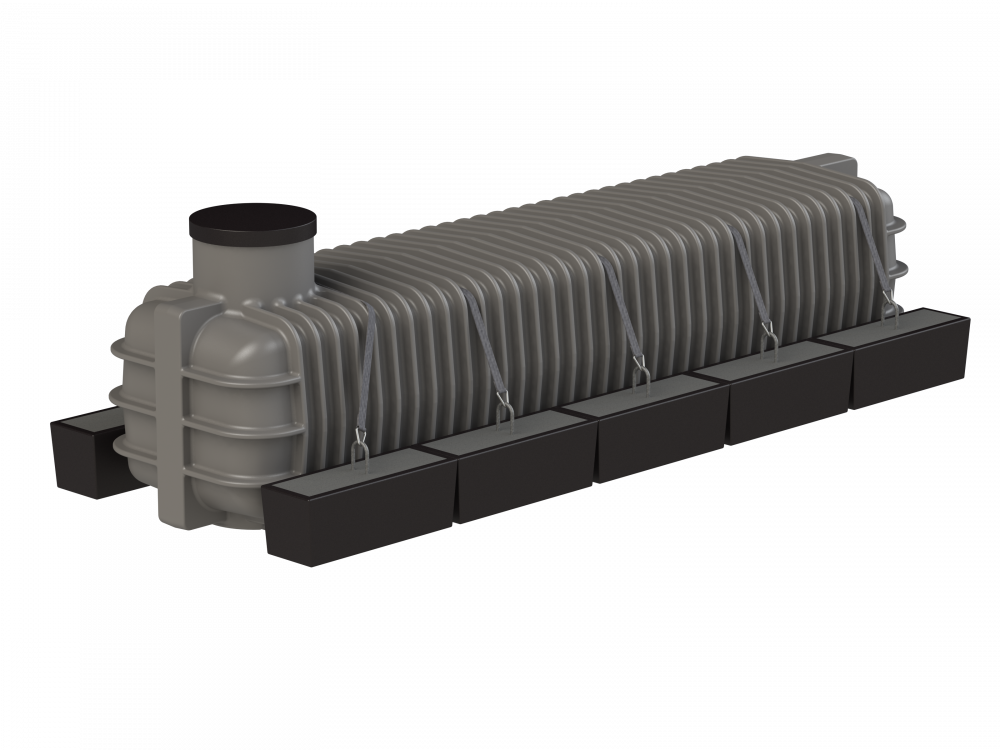Friday, 12 January 2024 Knowledge Articles
How to keep underground tanks in place
Uplift restraints act like modular anchors on your tank
Underground tanks fit neatly into New Zealand’s shrinking residential sections. Many of us will remember the quarter-acre section, which equates to about 1,000 square metres, but in today’s metropolitan centres, houses are frequently built on much less land. For example, new section sizes in Auckland have reduced by a third in the past three decades; they now have a median area of less than 500 square metres, with the average section about 120 square metres smaller than in the rest of New Zealand.
Builders not only have to construct designs that fit into smaller sections; they also have to install water tanks to stay compliant with council regulations. For example, most of New Zealand’s councils now expect homeowners to do their fair share of stormwater mitigation and detention/retention tanks achieve this. But where do you put the tank? Aboveground slimline tanks are one solution – and going underground is another.
Underground water storage tanks are a space-saving way to store water on smaller sections while meeting council compliance standards where on-site stormwater mitigation is compulsory. So far, so good. However, some residential sections are in flood-prone areas or locations with high groundwater. Since empty underground tanks are naturally buoyant, how do you keep them in place? Uplift restraints are the answer.
Uplift restraints are the ultimate in simplicity, but they perform a critical function on sites with high groundwater or flood-prone areas. Straps are looped over the top of the tank and attached to restraint boxes on either side. The boxes are then filled with concrete to ensure the tank remains stable, even when hydraulic pressures are high. For example, Promax uplift restraints are designed and engineered to stop the tank from floating and hold the tank in the ground should groundwater rise to ground level whilst the tank is empty.
Some council inspectors are aware of flotation issues in certain areas and ask for restraints, while at other times, the site engineer will require them to be used. For residential size tanks, one set of Promax uplift restraints is typically used for every 1,000 litres of tanking for all underground tanks. For example, a 2,000 litre underground tank will require two sets of restraints while a 7,000 litre model will need seven sets.
There might be some confusion about installation anchors and whether they perform the same function as uplift restraints. They don’t. Installation anchors will help hold the tank in place during installation. They offer a limited degree of restraint but are not designed to keep the tank in place if groundwater rises to ground level while the tank is empty. On the other hand, uplift restraints are considered a safe and reliable long-term option in areas where high groundwater is present or where floods are frequent.
Even the best underground tanks are buoyant when empty, especially when hydraulic pressures are high. For this reason alone, uplift restraints should be a part of the complete tank system. They’ll keep the tank in place, while the tank itself will keep everything compliant on a residential section of any size.


